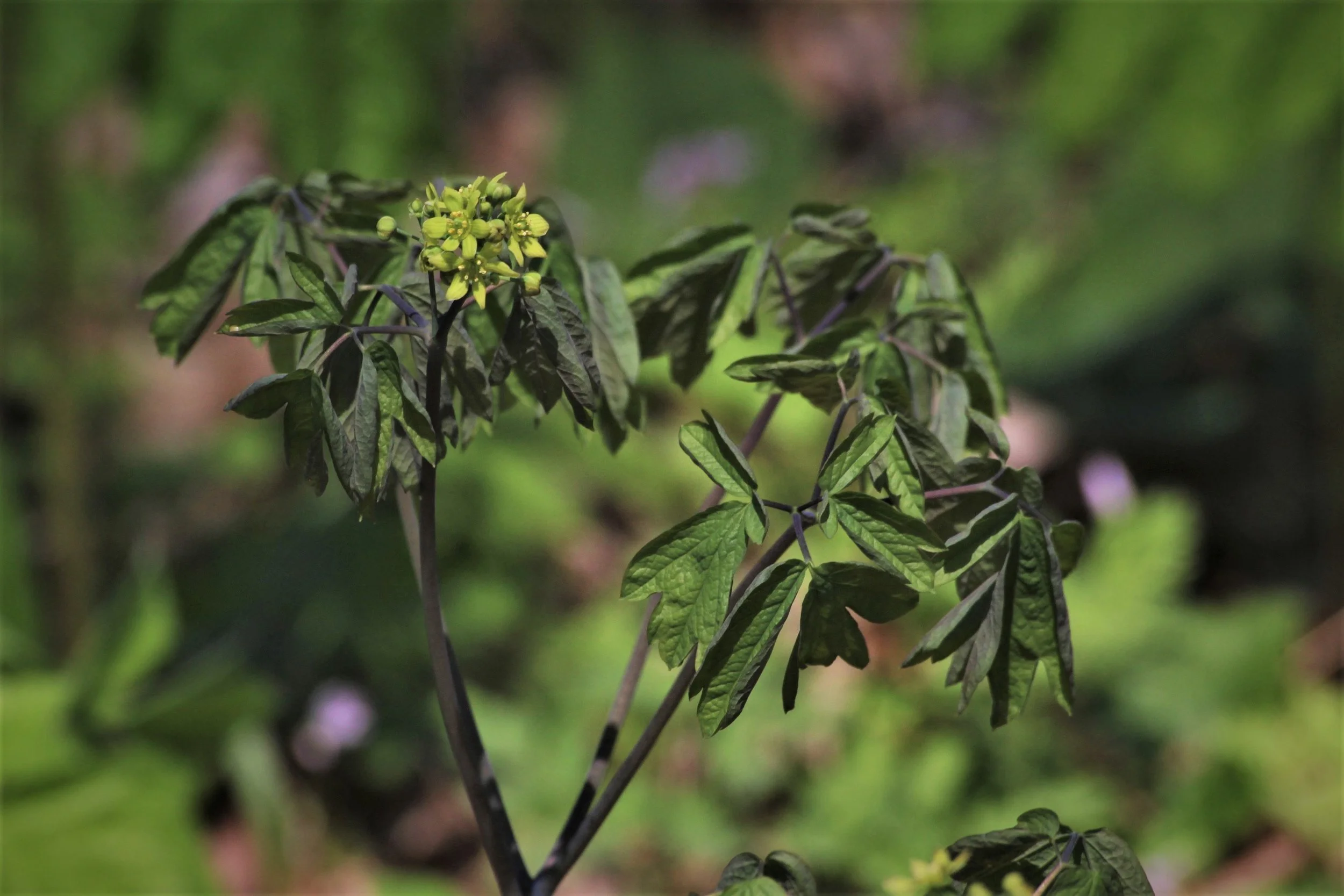One of the most stunning spring flowering plants in the eastern forests has to be blue cohosh (Caulophyllum spp.). Around this time of year they begin poking up through the leaf litter, their deep purple stems gradually giving way to shades of blue and green as the leaves and flowers expand into the springtime sun. They seem almost otherworldly and finding them among the speckled leaves of trout lily is a sight I will never tire of.
For as long as it has been known, North America's Caulophyllum has been considered a single species, Caulophyllum thalictroides. The specific epithet hints at how similar this species can look to the meadow rues (Thalictrum spp.). However, a keen observer could tell you that there are apparent differences between some blue cohosh populations, especially in the northeast. Some cohosh flower much earlier than others. Also, there are differences in flower color as well. Some plants sport flowers decked in deep maroon whereas others are pale green. These differences have led some authors to list the purple flowering variety as a subspecies, Caulophyllum thalictroides giganteum.
Caulophyllum thalictroides
Photo by Tom Potterfield licensed under CC BY-NC-SA 2.0
More recently, however, it has become apparent that these two varieties may actually be separate species. Though their ranges overlap, what is now being called Caulophyllum giganteum is distributed much farther north than C. thalictroides. The key differences between these two has to do with flowering time. If these two species become reproductively active at different times, then they are in fact reproductively isolated from one another. Though they can hybridize, the resulting seeds experience reduced viability and do not perform as well as either parent.
Photo Credit: Tom Potterfield (http://bit.ly/1E0JcQ5)




